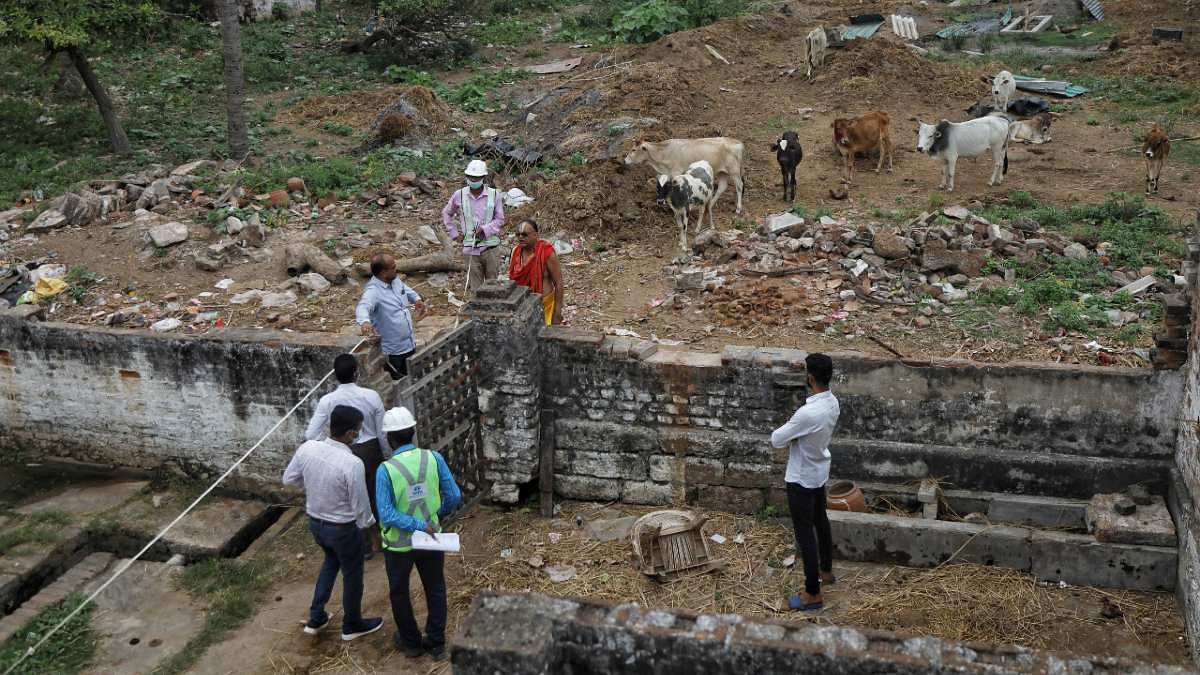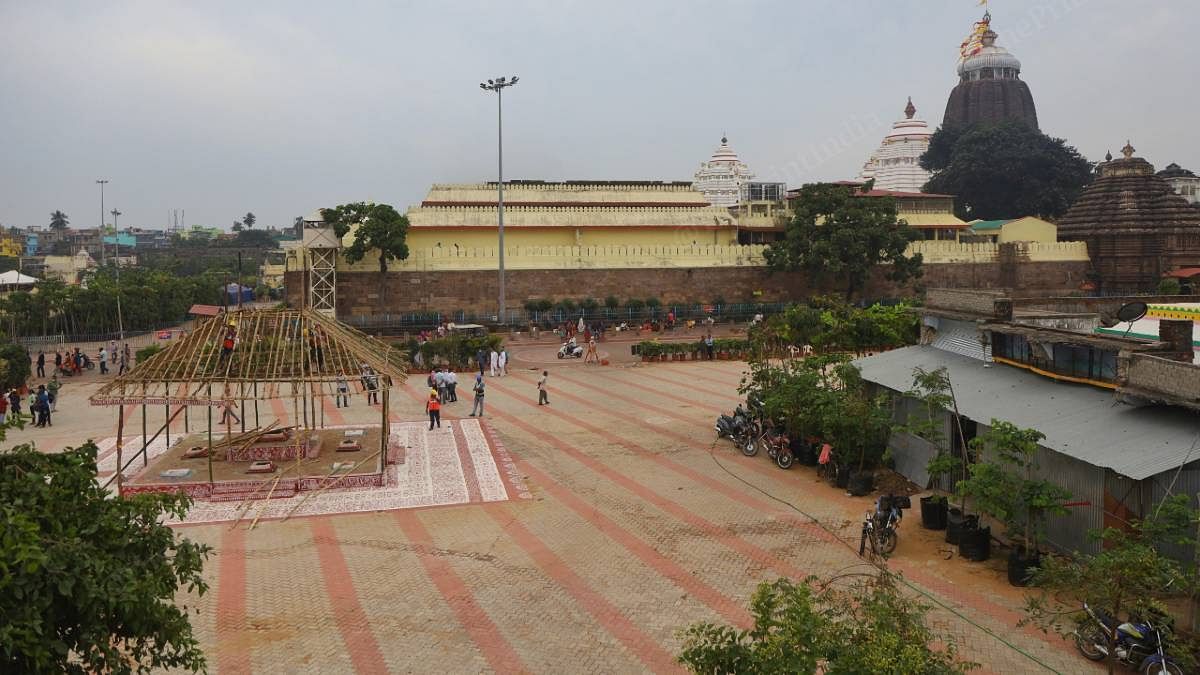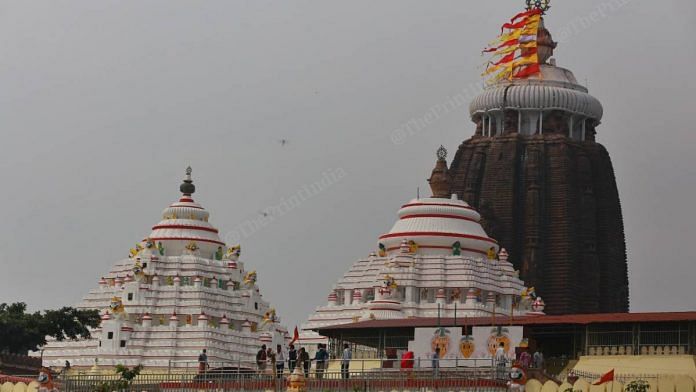Puri, Odisha: Facing the Jagannath temple, hands raised above his head in obeisance, a young devotee, Ankit, chants, “Jai Jagannath”. He is running late for his train, but just had to have a darshan of Lord Jagannath, even from a distance.
“Train chhoot bhi gayi toh koi baat nahi, Jagannath ke darshan ho gaye (Even if I miss the train, I got to see Jagannath),” Ankit says.
The Jagannath temple and its resident deity hold a place of utmost reverance in Odisha, so that for any auspicious occasion, the first invitation goes to Lord Jagannath. Throughout the city, a common greeting rings out: ‘Jai Jagannath’!
But now, in the land of Jagannath, there are new developments afoot. The environs of the temple will see a massive facelift under the the Shree Mandira Parikrama Project, itself subsumed within the ABADHA (Augmentation Basic Amenities & Development of Heritage & Architecture at Puri) scheme of the state government.
Under this main project, which aims to earn a World Heritage Site tag, a 75-metre corridor is being constructed around the two-kilometre-long perimeter of the temple.
The corridor will enable pilgrims to take a parikrama (circumambulation) around the temple. There will also be a refurbished clock tower, space for parking, garden areas, restrooms and an information kiosk.
Thousands of pilgrims throng the temple, despite the threat of a Covid infection and the new Omicron variant, several of them without masks. The temple is one among the Char Dhams in the Hindu religion, believed to help people attain salvation.
Around 40,000 tourists visit Puri every day, with tourists even coming in lakhs during the weekends before the pandemic, explains Collector Samarth Verma. Around 60,000-70,000 come on weekends now, he says.
However, much of the periphery of the temple wears a dilapidated look. Many structures have been demolished, others are under construction.
Also read: Odisha’s Jagannath temple was at the centre of British govt decision to go secular in India
New corridor, ‘golden handshake’
Verma explained that land acquisition for the Parikrama project had started in 2019, but had faced delays due to the pandemic. “Now, construction has started and the land acquisition process is also nearly complete,” he says.
He points out that in the past, the temple periphery was highly cluttered, clogged by illegal construction and mutts. There was a constant security threat, and risk of stampedes was ever-present.

Dr Krishan Kumar, secretary of the Public Works Department in Odisha as well as the chief administrator of the Puri temple administration, says the target for completion of the Parikrama project is the 2023 Rath Yatra. The foundation stone was laid on 24 November in the presence of Odisha Chief Minister Naveen Patnaik.
The most challenging part of the entire process, Krishan Kumar tells ThePrint, was land acquisition.
“Many people with shops and homes around the perimeter would have been unwilling to part with them, considering the significance of Lord Jagannath. Because they have been staying there for so long we have given everyone a very handsome rehabilitation package. It’s like a golden handshake,” he says.
With different stakeholders and people’s sentiments involved, the land acquisition took the shape of a very comprehensive consultation process, he further explains.
“This is a very sensitive matter of people’s faith and belief, therefore we had to tread carefully,” says Kumar.
Kumar’s words are borne out by the reactions of pilgrims to the Parikrama project.
Shivi Soren, a resident of Jamshedpur, is visiting the Jagannath temple for the first time in 45 years. “Jo purvaj se hai, ched chhad nahi hona chahiye (nothing should be done to the original structure of the temple, which was seen by our ancestors),” she says.
According to collector Verma, the total amount spent on resettlement and rehabilitation is around Rs 325 crore. The money was paid out to 134 land users and 18 mutts.

‘A cultural project’
The temple parikrama redevelopment is being carried out by Tata Projects at a cost of approximately Rs 800 crore, wholly borne by the state government. Out of the Rs 800 crore, Rs 330 crore is the cost of the civil works, while the rest has been spent in the land acquisition process.
Kumar says he never saw this as an infrastructure project. “It has always been a cultural project for me, to create amenities for pilgrims.”
One of the main priests of the temple, Mahant Narayandas, says he wholly welcomes the project as till now, no leader had taken the initiative of building a Parikrama corridor at Puri. He says he is thankful to CM Naveen Patnaik and Prime Minister Narendra Modi for taking the initiative.
“Puri is a religious capital and one of the Char Dhams. However, it did not have a Parikrama Marg, like in Tirupati or Rameswaram. This Parikrama project will greatly benefit everybody in Puri,” he says.

‘Focus should be on pandemic’
The temple project and the ABHADA scheme proposes many developmental works in Puri. But, in the middle of a pandemic, with the looming threat of a new variant, many believe the timing is not correct.
Dr Rita Ray, a sociologist and adjunct professor at the National Law University, Odisha, says the state government’s priorities are completely misplaced and the project is unnecessary for the time being.
“It is unfortunate that there is no talk of developing schools and building new hospitals at this stage. No one is worried about environmental degradation or demanding more vaccines,” she says.
Earlier, CM Naveen Patnaik would quietly go to Puri and visit the Jagannath temple, but in recent times, such visits have become “grand shows”, Ray says.
Senior journalist Rabi Das accepts that the Shree Mandira Parikrama Project will greatly help tourism, along with the rest of the ABHADA scheme in Puri. But he concurs with Ray in that the main priority should be the pandemic.
“This will greatly help Puri developing as a main tourist destination. However, there is also Covid and we cannot let our guard down,” he says.
(Edited by Saikat Niyogi)
Also read: Jagannath Yatra — a 462-year-old tradition that nearly got cancelled this year



